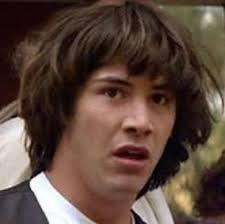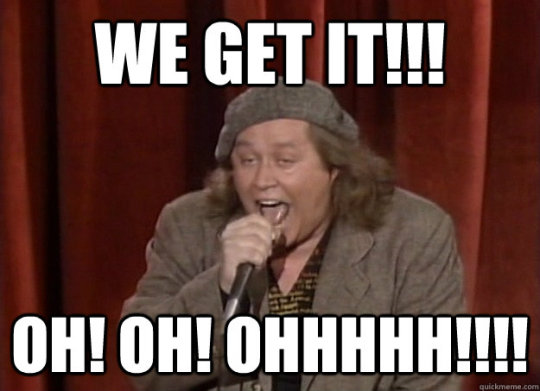Don't wanna be here? Send us removal request.
Text
Ga Analysis Intro
Introduction
As the years go by, media and pop culture have become the normal in society. The standards that media and society has given to women and young girls, has given them an unrealistic view on what being a women means. In this genre analysis I will be presenting two genres; Iconography and typography. The Iconography genre is a small clip of a documentary called “Ms. Representation,” directed and produced by, Jennifer Siebel Newsom. Newsom is an American actress and film maker. The overall statement that Newsom gives to the audience of her documentary Ms. Representation is, the idea of how woman are misrepresented and looked down upon in today’s society, and specially the mass media. In the second genre, typography, an article is presented by the well-known company, Dove. The article is presented in their website, “Women in Media: Is it time to give the media a makeover” In this article the main purpose of the company is to inform the reader of how the media actually works in miss representing women, and the feminine idea. In both of these genres, the main purpose on the topic of, media’s portrayal on woman. Throughout this genre analysis the differences of both article and video will be presented to give the audience and discourse communities an in depth analysis on the topic of, How Woman are Miss Represented in the Media
0 notes
Text
Ga Analysis Part 1
Audience and Purpose
In both of the genres an audience and purpose are presented. In the Iconography genre, Ms. Representation, Newman (2011), presented her documentary with the specific purpose to be directed towards women, and overall society. The documentary main purpose is to inform the specific audience of how the media is miss representing women in all aspects of life and society, and to make a change in how young girls look at themselves and their education compared to the Medias view. Throughout the genre the director, Newman (2011) presents examples of the miss representation of women, in data form and interviews with Hollywood actresses, scholars, and politicians. As the audience is seeing the information given to them on the on the topic. They make up their mind on the information they already had, and the new information given by the documentary. This information is presented to make a change on how the audience, young girls look at themselves, instead of comparing to the media.
In the second genre, typography, an article by Dove on Women in Media: Is it time to give the media a makeover. The article’s audience is directed towards mothers and young girls. In the article the well-known company Dove makes the purpose of the article to inform mothers and young girls on the effects of the miss representation of woman and beauty have on young girls. As the article is presented the company made it very obvious to make its purpose known through the lessen and information they gave, and that it was directed towards woman and young girls on how to perceive the medias views on them. The audience of this article knows some information of the portrayal of women in the media, but want to learn more on the topic, and the article Women in Media: Is it time to give the media a makeover, adds more to the already known information of the audience and discourse communities.
Both of the genres give their attention towards the same kind of audience which are, women. As it concerns to the purpose of how the audience took the information of both genres. The audience of both genres took the information as a new way to look at how woman are miss represented in the media, and what should be done about the issue. In the Iconography the issue was presented as visuals and major use of pathos. In the typography the lecture was also filled with pathos to convince their audience the information of the miss representation of women.
Style and Language
In the documentary Ms. Representation, the style of the genre is very to the point. In the introduction of the documentary, quotes and facts are presented in a put attention to this kind of way. The quotes and facts give the style and language of the genre a serious manner towards the topic, the miss representation of women. In the second genre, the article by Dove Women in Media: Is it time to give the media a makeover, the style and language of the genre is very serious and motivational towards their audience. In the article the style is formatted in a lessen form; the purpose of this is to give their audience a new lessen on the miss representation of women, and inspiration towards taking action on the issue.
Rhetorical Issues
In both of the genres they show evident and similar rhetorical appeals. But since they are, an iconography, and typography genres, the rhetorical appeals and issues differ from one another.
0 notes
Text
Ga Analysis Part 2
In the first genre the documentary Ms. Representation, the credibility of the genre is presented through stats and interviews with scholars and politicians. In each interview the director Newman (2011) makes sure to present each scholar, actor, and politician to make the information given by the article is credible. Another thing that the documentary presents as credibility to the issues and stats presented are, company and organization names such as, Center for the Study of Women in TV and Film. In the second genre the article, Women in Media: Is it time to give the media a makeover, the credibility of the article comes from, studies made by doctors such as, UK psychotherapist Dr. Susie Orbach, Body Image: An Introduction to Advertising and Body Image, and the study of Gender Inequality in Cinematic Content? A Look at Females on Screen & Behind-the-Camera in Top-Grossing 2008 Films. All of this studies are presented in the article to give the purpose of ethos to it.
Pathos
In the documentary, Miss Representation the pathos of the genre is shown through interviews and testimonials of girls affected by the miss representation of women in the media. Through each testimonial the girls and women give their stories of how the issue has affected them physically and emotionally. Also the pathos is seen through the music and seriousness of the music and stats portrayed in the documentary. In the second genre the article by Dove, Women in Media: Is it time to give the media a makeover, the pathos is as well shown through the stats and studies presented in the article. Another use of pathos in the article is the effect that the lessen gives to the mothers. The question of how can you help your daughter see the miss representation of women in media, and not be affected by it.
Logos
In the first genre the documentary, Miss Representation, the logos is portrayed through the presentation of public figures such as, actors, scholars, and politicians. The use of this public figures, and their put in on the topic, made the obvious of the logos in the iconography genre.
In the second genre the article by Dove, the logos is seen through the stats portrayed in the article. Another thing that is seen as the logos in the article, is the use of logic to show the lesson to the audience which are the mothers and young daughters.
Structure and Delivery
The information on both genres is organized in a fashionable matter to display their purpose for both of them. In the iconography genre the information is displayed through a pattern of celebrities and scholars to give the statistics. In the typography genre, the article by Dove the genre is organized in a lessen form to give their audience their statistics and personation. On both genres the limitations on the information are limited, because they will benefit from one another. In the iconography genre if the typography was more evident the genre will give a more in depth information on the miss representation of the genres. Overall both genres represented the topic in depth on the “Media Portrayal of Woman.” The genres give the foundation for the research and structure of the miss representation of woman in the media.
0 notes
Text
GA Analysis Conclusion
Conclusion
In this genre analysis an audience and purpose, rhetorical appeals, and structure and delivery of the genres where in depth analyzed. In the audience and purpose of both genres, the audience of both were very similar since it was mainly directed towards women and society. The one difference was the way the purpose was stated in both genres. As for the purpose of both, it was to give an opening eye realization of the miss representation of women. In both of this genres the rhetorical appeals differ since they were different genres but both still had their similarities since it was directed towards the same topic, Overall the analyzing of this genres gave an in depth view on the topic of the portrayal of women in the media, and the Iconography the documentary Miss Presentation by Newman (2010) gave an overall view and stated a well purpose of how the media miss represents women.
0 notes
Text
Ga Reflex Part 2
3.
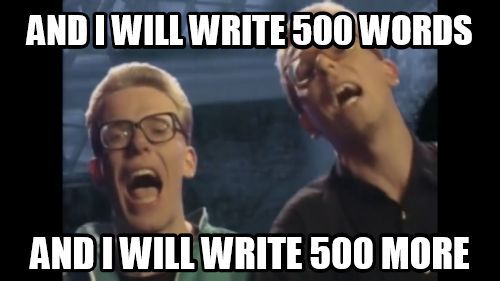
4.. On the third question I choose that specific typography genre to demonstrate the value of studying and writing genres comes from expression and the act of writing overall
1 note
·
View note
Text
Lit Review Abstract
ABSTRACT
In today’s world the media has over powered our lives and our views. From being exposed to media such as, the internet, commercials, and prime TV, society has absorbed their ideals, especially those of woman’s. In this Lit. Review an analysis is made of The Medias Portrayals of woman. The analysis is presented with the main idea that, because of the media’s portrayal of woman, society and woman have concentrated on their body and beauty image, instead of their education. With this idea in mind the Literature Review, id broken into four different research questions that aim to target the thesis of the paper. The main four research questions are:
1.How has the portrayal of women in the media changed in the last 60 years?
2. What are the statistics of woman’s achievements and the exclusion of it in the media?
3. What are the racial and gender gaps of Hollywood as of today?
4. What are the sociological and psychological affects that the media portrayal of women has had on women and society as a whole?
As mentioned before each question is aimed at the target of the main thesis of the paper, the idea that the Medias portrayal of women has targeted body image and beauty, instead of education and career achievements.
0 notes
Text
Lit Review Intro
Introduction
Throughout the decades the media world has expanded to great extends. From the use of newspapers, to radio, to television, to advertisement’s, to finally the new world of the internet and social media. Media as of today is everywhere and it affects our social values to a great extent. The media portrayal of women is an example of how the media has shaped minds into believing that the perfect view of gender is what we see inn advertisements, movies, TV shows, etc.
Throughout the decades the issue of gender portrayal has occurred the new use of the media, such as the internet was not the start of this portrayal. Back to 19th and 20th century the social view of female was portrayed in newspapers as a feminine lady, with a small waist, and big breast that always had a classy smile. This portrayal appeared in many advertisements of the age. As the decades continued, new portrayals appeared which made woman more interested in their looks and figure, neglecting their education and career achievements. The following questions give a closer look to the effects of such portrayals on women, the origins of these portrayals, and how they have influenced society’s thoughts and perceptions about women
1. How has the portrayal of women in the media changed in the last 60 years?
2. What are the statistics of woman’s achievements and the exclusion of it in the media?
3. What are the racial and gender gaps of Hollywood as of today?
4. What are the sociological and psychological affects that the media portrayal of women has had on women and society as a whole?
The effects of women’s portrayal in the media go beyond the extent of a social trend. It has made both psychological and sociological impacts on society. Regarding women’s perceptions about themselves and gender gaps in education. Portrayals, that have made an impact on how a women views herself and how, a man views the opposite gender. In this Lit Review an extensive breakdown of the history, effects, and statistics that represent gender, and race, and the issue of a lack of education will be presented. This will demonstrate the impact gender portrayals in the media have had on women’s view on their education and career achievements.
0 notes
Text
Lit Review Q1
How the media portrayal of woman has changed through the decades?
Throughout the decades the Media Portrayal of Women has changed views through every decade but one idea of such portrayal, still remains the same. The idea of dependency in every type of media is still one of the main factors of the portrayal. From TV, to movies, video, games, to advertisements. The portrayal of women has always covered the same exact ideas, such as the perfect image on a women’s looks, the idea of dependency on a man, and the neglect of education and career achievements was presented.
In the 1950’s the idea of gender gaps and stereotypes took over the media. Shows such as, “Father Knows Best”, “I love Lucy”, “The Donna Reed show”, and finally “Leave it to the beaver.” All these shows the stereo typical portrayal of woman at the time. According to Mallon (2014) In “I Love Lucy”, the main character Lucy Ricardo, is seen as, “being naïve, dumb, careless with money, and secretive about her true age and hair color.” This stereo type was seen in most female characters throughout the 1950’s media. With the pressure of women seeing this stereo types, many oppositions occurred during this time period. The coming of “The Feminine Mystique” a book by Betty Freudan revolutionized the minds of millions of woman on what the stereotypical mindset of a woman is. According to Freudian (1963) , the lives of several housewives from around the United States who were unhappy despite living in material comfort and being married with children. Freudan (1963) Friedan points out that the average age of marriage was dropping and the birthrate was increasing for women throughout the 1950s, yet the widespread trend of unhappy women persisted, although American culture insisted that fulfillment for women could be found in marriage and housewifery. The statements that Betty Friedan made in The Feminine Mystique changed the mind set of many American woman, but the consistency of the miss representation of woman in the media made little to no change in the mindsets of women.
During the next decades the media’s portrayal of woman remained the same, the over sexualized continued, the gender and race gaps were still consistent as the last ten years, and the portrayals were not only affecting woman, but young girls, looking at this miss representation of woman in the media. According to Woman’s Library (2007) “as the mass media grew over the second half of the 20th century, the portrayal of women on television and in newspapers became a particular subject of criticism and debate, and many women turn to cosmetic treatments like face lifts and lase hair removal to achieve what they believe is expected of them.” The media portrayal of woman, gave woman this miss conception on what beauty and being a woman meant. The unrealistic views of the media over the last 20th century, and first fifteenth years of the 21st century, has taken over society views and especially those of young woman. This young’s woman’s ideals are targeted towards their image and dependency on men, instead of their independence , and education.
0 notes
Text
Lit Review Q 2
What are the statistics of woman’s achievements and the exclusion of it in the media?
Throughout the decades women’s achievements have come to a great extent. From getting a simple right to vote, to the first woman becoming a doctor, to the first women as the secretary of state in the United States. Women’s achievements have become many obstacles, but what happens when the media overlooks such achievements. As of today woman’s statistics show that in television “22% of news stories subjects are women.”, “40% of characters on TV in May 2006 were TV/women, and they were overwhelmingly white” (Ruby 2007). The statistics shown are the portrayal of the media overlooked achievements of women. As it concerns to other forms of media, a pattern of the miss representation of woman’s achievements is presented. According to, (Ruby 2007) In Film, “60% more over 40 leading male actors are hired than over 40 female actors”, “3 female filmmakers, in all of academy award history, have been nominated for best director award (Lina Wertmuller in 1977, Jane Campion in 1994, and Sofia Coppola in 2004), “19% of films released in 2005 employed no women directors, executive producers, producers, writers, cinematographers or editors.” This statistics of the visual media that women are exposed to are evident in the matter that no matter the achievement a women has, the miss representation remains, as well as the prejudice, and favoritism towards men
In Hollywood, another issue of miss representation leans towards the female character attributions and job related aspirations in film and television. In a study by the Geena davits institute on gender in media, a quantitated and qualitative study towards the gender gaps of attributions and job related aspirations in film and television are presented. The study is composed of , “11,927 speaking characters for gender roles across three media: 129 top-grossing family films (G, PG, PG-13) theatrically released between September 2006 and September 2011; 275 prime-time programs across approximately a week of regularly airing series in the Spring of 2012 on 10 broadcast (ABC, NBC, CBS, Fox, CW) and cable (Cartoon Network, Disney, Nickelodeon, E!, MTV) channels; and 36 children’s TV shows airing in 2011 across three networks (Disney, Nickelodeon, PBS)” Geena Davis Institute of Gender Gaps (2013). In this subsection of the study, the organization breaks the study down in various careers such as, chief justices, DA’s, CEO’s, High Level Politicians, and editors in chief. The study compares male and females ratios to the industries in the section of family films, and prime time TV shows. According to the Geena Davis Institute of Gender Gaps (2013), “Prime-time is doing a much better job portraying powerful women, with females shown in leadership positions across seven out of eight industries listed in Table 6. Prime-time females are portrayed as 14% of corporate executives, 42.9% of characters with financial clout (e.g., investors, economic officials), 27.8% of high level politicians, 29.6% of doctors/hospital managers/CMOs, 38.5% of academic administrators, 27.3% of media content creators and the only “editor in chief” in journalism.” The statistics of this study show the miss representation of female characters in powerful roles and as career woman
Another industry that is well miss represented in the media is the STEM careers. The lack of women in the field, is also an issue in real life. According to Geena Davis Institute of Gender Gaps (2013) “The n 2009, females held 24% of all STEM jobs in the U.S.” as to the gap in media, “The percentage of STEM females in prime time is just slightly lower than this point statistic (-2.9%), whereas a larger gap exists for family films (-7.7%)” The statistics of this study, and the miss representation and gaps of the female character attributions and job related aspirations in film and television show the reality of the miss representation of women in the media. The overlooked of achievements and actual statistics of women in various industries, portray the statement that the media is giving the wrong view of women’s education and careers. The statement that is made gives the viewers and young girls the wrong statement on the reality of women, and their goals. The fact that if young girls can’t see an empowered career woman, the young girl won’t aspire towards that success. According to the Genna Davis Institute of Gender Gaps, ““If she can see it, she can be it
0 notes
Text
Lit Review Q 3
What are the racial and gender gaps of Hollywood as of today
As of today the media is a great part of culture, and has a great power on society’s standards. As of today the media has great gender gaps, as well as racial gaps. This gaps are especially evident in female characters. According to the Geena Davis Institute of Gender Gaps (2013) “gender imbalance is alive and well across media” A study made by this institute proved that females are not as well seen in the media as males appear. Genna Davis Institute of Gender Gaps (2013). To prove this statement a table of statistics will be shown:
Prevalence of Female Characters across Media
Prevalence Indicator
Family Films
Prime Time TV
Children Shows
% of Female Characters
28.3%
38.9%
30.8%
Ratio of male to female characters
2.53 to 1
1.57 to 1
2.25 to 1
% of stories w/female narrator
26.5%
44.2%
20%
% of stories w/gender-balanced casts
11%
22%
19%
Total # of speaking Characters
5,839
5,520
568
The prevalence of male character is evident in the media especially in the section of family movies, as of prime-time TV, and children’s shows the numbers show the same statement of the prevalence of male characters, and narrators in the media as of today. One thing that I found very interesting is that according, to the Geena Davis Institute of Gender Gaps (2013), the total number of speaking characters that are female in a children show was less than any of the sections such as family movies, and prime-time TV. The interesting part is that a TV show targeted to children, has a male prevalence, and female characters are shown as mute. The result of this prevalence of speaking characters over male and female in a children show, exposes young girl to the image that a male character is more powerful, and that a female character should be mute to decisions and to make a statement
Not only does the media face with gender gaps, another issue is race gaps in the media as of today. In the study by the Geena Davis Institute of Gender Gaps (2013), a study on the statistics of the race gaps in the media is presented
Females’ Race/ethnicity across Media
Race/Ethnicity of Characters
Family Films
Males Females
Prime Time TV
Males Females
Children’s Shows
Males Females
Caucasian
70.8% 29.2%
60.1% 39.9%
64.9% 35.1%
Black
69.8% 30.2%
54.7% 45.3%
68.3% 31.7%
Hispanic
71.5% 28.5%
57.9% 42.1%
40% 60%
Asian
65.5% 57.9%
57.7% 42.3%
47.4% 52.6%
Other
81.3% 18.7%
70.2% 29.8%
60% 40%
0 notes
Text
Lit Review Q 4
What are the sociological and psychological affects that the media portrayal of women has had on women and overall society?
As of today, media is all over our lives. From the internet, to prime-time TV, movies, commercials, media and their ideals have taken over society and specially women and young girls. According to, Miss Representation (2010) “American teenagers spend more than 10 hours a day consuming media, most of it filled with content that objectifies women and distorts their bodies.” If young girls and woman are over exposed to unrealistic views of beauty and portrayals of a woman, how are there standing views, and how are they affected psychologically and sociologically. Approximately 50% of girls and undergraduate women report being dissatisfied with their bodies (e.g., Bearman, Presnell, & Martinez, (2006) the portrayals of how the media are representing woman, have extended to portray a woman by their beautiful figure, and concern with their looks to obtain the approval of a men and society. According to Miss Representation (2010) “Girls are learning to see themselves as objects. American Psychological Association calls self-objectification a national epidemic: Women and girls who self-objectify are more likely to be depressed, have lower confidence, lower ambition and lower GPAs.”
In my primary research which consisted of how, the media has affected you personally, and do you think the media over sexualize woman? The answers were, 75%. The results of this survey help exemplify the results that the media has on society and how they view it. The effects of the media not only have reached to discourage woman and young girls of perusing an education and a career, its portrayals have also reached them in a physical way. The exposure to television commercials that feature the thin-ideal image (as opposed to average-weight women or nonappearance-related content) increases women’s body dissatisfaction (e.g., Hargreaves & Tiggemann, 2004) and eating disorder symptomatology (e.g., Strahan, 2003) The harmful images that are targeted towards young girls as the norm, have resulted in a change of aspirations and their views towards their education and self-respect. Young girls and women’s ideals now consist of their body image, and ideals to get a man and start a family, and the idea of education and a career have diminished. According to Miss Representation (2010) “Women make up 17% of congress. The 2010 mid-term election is the first time women have not made gains in congress since 1979.” The idea that girls ideals have changed, has affected social roles and their idea of power. “If women spent a tenth of the time thinking about how to solve the world’s problems as they think about their weight…we could solve them in a matter of months.” – Katie Couric (Miss Representation 2010) the idea that media has changed views and portrayals, has affected new generations of women, the idea of education has been taken over by false reality of beauty image and body ideals.
1 note
·
View note
Text
Lit Review Conclusion
Conclusion
In conclusion, this Literature review presented, The Media portrayal of women, and the effects that it has had on woman, young girls, and society. The effects were exposed through this four research questions:
1. How has the portrayal of women in the media changed in the last 60 years?
2. What are the statistics of woman’s achievements and the exclusion of it in the media?
3. What are the racial and gender gaps of Hollywood as of today?
4. What are the sociological and psychological affects that the media portrayal of women has had on women and society as a whole?
Throughout this questions the main focus of the lit review was to emphasize how the media portrayal of woman has effected woman and young girls in giving up their education and pursuing career achievements. In the first question the history was exposed to find where the gap between media ideals and reality broke. As the second question proceeded, the question went in deeper to find where the media has changed women’s actual career achievements. The idea of hiding achievements and having woman have a different mindset on a career was exposed. On the third question the statistics were the main focus to find the actual numbers to support the thesis. In the last question, “What are the sociological and psychological affects that the media portrayal of women has had on women and society as a whole?” The question exposed the main thesis completely by focusing on the psychological and sociological effects that the media has had on woman and how this effects contribute to the lack of education on woman. The problem of the media is extensive and has extensive effects on women’s ideals and confidence. If the media was to exposed woman a different way, the world and society would have a different perspective on what a powerful and feminine woman means
0 notes
Text
Lit Review Sources
Sources:
Balkin, J. (n.d.). How mass media simulate political transparency. Cultural Values, 393-413.
Friedan, B. (1963). The feminine mystique. New York: W.W. Norton
Grabe, S., Ward, M., & Hyde, J. (2008). The role of the media in body image concerns among women: A meta-analysis of experimental and correlational studies. Psychological Bulletin, 460-476
Koerning, S., & Granitz, N. (n.d.). Progressive yet Traditional. Journal of Advertising, 81-98
Mallon, M. (2014, March 6). Women on Television: 1960s. Retrieved October 25, 2015.
Newsom, J. (Director). (n.d.). Miss representation [Motion picture]
Research Informs & Empowers - See Jane. (n.d.). Retrieved October 26, 2015.
Ruby, J. (2007). Women in Media. Off Our Backs, 37(1), 14-16.
Women in the media - Dove Self-Esteem Project. (n.d.). Retrieved October 5, 2015.
Womens-library.org.uk. (2007). Retrieved October 25, 2015.
0 notes
Text
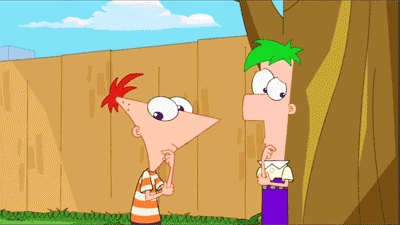
For my Lit Review, my research questions were hard to create. It was difficult because my topic and the research made were leaning towards one side making it biased but, after a lot of research I created them.
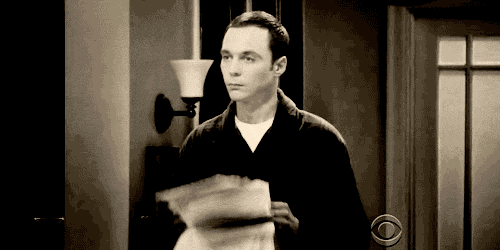
When it came to my research methodology it came clear that the research and facts were all the same in most of my research.
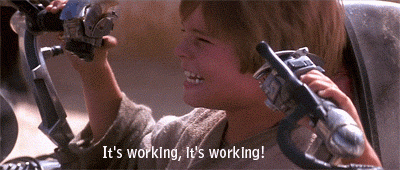
When it came to my research methodology it came clear that the research and facts were all the same in most of my research
1 note
·
View note
Text
Lit Review Reflection

For my Lit Review, my research questions were hard to create. It was difficult because my topic and the research made were leaning towards one side making it biased but, after a lot of research I created them.

When it came to my research methodology it came clear that the research and facts were all the same in most of my research.

When it came to my research methodology it came clear that the research and facts were all the same in most of my research
1 note
·
View note
